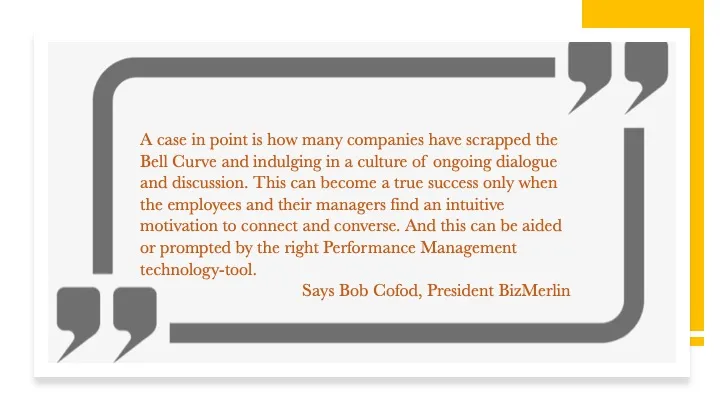What Defines a Modern Talent Management System? 10 Essential Features
The 1930s-40s was the time when the seeds of Performance Management were planted, on the backdrop of World War 1. Since then, performance management has undergone three-sixty degrees roundabout, going through intermittent stages of Annual Confidential Reports, Personality Surveys, Goal-setting approach, Bell Curve approach, and today taking on employee engagement- driven approach.
One can see an overriding change in performance philosophies, from an employer-driven directive and rigid structure to an employee-empowered flexible and continuous process. This is because, any people-process must align with the business scenario, and today, business is all about agility and real-time responsiveness. Performance management systems to are mirroring this agility- we are seeing the rise of Agile Performance Management or Continuous Performance Management.

Agile Performance Management is designed for the new ways of working i.e. collaborative, social, speedier. Gone are the days when employees would wait it out for one year to hear how they have fared and course-correct. Business today demands quick adaptation to change, and the performance process is vital to drive that adaptation, both in direction and behavior. This is achieved through the process of regular check-ins i.e. meetings between the manager and employee to discuss performance aspects and with ongoing and instant feedback.
Also, the performance philosophy has changed- “PM for reprimanding” is being replaced by “PM for developing”. This means that Agile PM has a strong employee-development focus, rather than just “getting the work done”. Agile performance management thus renders a positive employee experience, and is being used by organizations to drive engagement and retention.
The fact that agile performance management can create a positive employee experience has huge benefits, both at the employer and employee end. Agile performance management helps adopt futuristic people-interventions. A case in point is employee recognition, which is fast-moving from “years of service” to “daily social recognition”.
A check-in-based performance management system can help track and acknowledge those high performers who are their best selves, on a monthly or a weekly basis. Regular check-ins and instant feedback motivate employees, increasing their productivity; and high employee productivity leads to high organizational productivity.
A continuous performance cycle drives faster time-to-market and faster innovation, which are a must for success. “Fail fast” is the buzzword that describes this- businesses must be vigilant and responsive enough to immediately identify and act on conditions that are likely to indicate a failure. Agile can be thought of as a means to “fail fast and then succeed”.
RELATED ARTICLE: GUIDE TO AGILE PERFORMANCE REVIEWS
To go agile, the first step is to incorporate the following key features of agile performance management:
We can see that agile performance management inherently interlinks with other HR processes. Therefore, to extract the real benefits of agile performance management, you must integrate the following HR processes and systems into the PM functionality at the start:
Going agile is quite a change and can be made easier by leveraging technology. It is important to design the right agile performance management system which espouses the values of sharing, collaboration, communication and speed.
To create a real high-performance transformation, first understand the performance pain-points of the real users- business managers, HR business partners, and the employees themselves. Then build-in the desired functionalities and tie them together in an easy-to-use workflow. Only then can the goal management and performance review process add value to users and the organization alike.